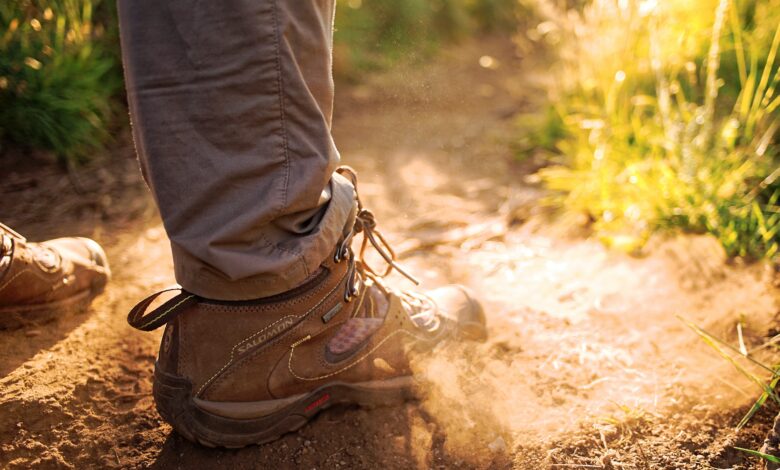Why Walking Boots are Important for Travelers

Traveling is a breath of fresh air, allowing you to break away from your routine, experience the magic of new places, and make amazing memories. If you want to enjoy your escapades, it is essential to ensure that you feel comfortable. Wearing the correct shoes is one step toward ensuring you enjoy your trip and avoid accidents or injuries like foot cramps.
It is common to see people climbing mountains, exercising, or even traveling in walking or hiking boots. These outdoor apparels are just a fashion statement to most people. Boots have an aesthetic appeal, but there is more to outdoor boots than just being a fashion statement. So, what is the point of outdoor apparel like boots when traveling? Let us find out!
They Offer Protection
Walking boots have soft cuffs making them the most protective walking shoes. Their taller construction offers ankle protection by guarding against scraps from rocks, accidental knocks, and debris getting into the boots. Since snakes and insects mainly attack below the ankle, these shoes can protect you from life-threatening bites. Their high collar supports the ankles ensuring extra support and preventing muscle strains and knee sprains. Ankle support helps you comfortably travel long distances without twists and injuries. It also creates balance, especially for those who need to walk with backpacks. Most modern boots have patches at the bottom to protect you from thorns and rocks injuries.
Guarantee Maximum Comfort
With boots, you do not have to worry about comfort as they can keep your feet cool and dry, which prevents blisters. Compared to sneakers, these boots offer all-weather comfort. They are pretty versatile, and they withstand adverse weather conditions. When traveling with these boots during winter, you do not have to worry about snow, side rocks, excessive sunlight, or dust.
They are Waterproof
While traveling or hiking during the cold season, you are exposed to many hazards, including mud and water. Most hiking boots are waterproof, and your hiking adventure should not stop even if you do not have waterproof trousers. You can easily travel through mud or streams without your outdoor trousers getting wet.
Read Also: Indoor/Outdoor Rug Guide: Find the Perfect Rugs for Your Home!
They Offer Cushioning
Outdoor boots have cushioning that can absorb shock when an accident occurs. Cushioning does this by increasing the duration of an impact, rendering the shock transmitted less harmful to the feet. This helps to prevent pain and discomfort. When walking, the effect of the ground is approximately 1.25 times a person’s weight, and midsole cushioning is very important to reduce the impact of these forces on your body. However, it is crucial to note that cushioning does not give you enough security in case of a huge impact. You may also experience detrimental injuries to your feet and ankles.
Durability
While the normal traveling shoes wear out after approximately 300 miles, walking shoes last longer. Outdoor boots can sustain over 800 miles. Although walking boots are pretty expensive, they can last a lifetime. They are made with durable material, like crampons, which makes them resistant to friction.
Ensure Breathability
Hiking boots cover the whole foot, and the surrounding internal air differs from the outside. The humidity and the temperatures inside the shoe are always greater than outside. If a shoe can transmit moisture from the upper parts, there will be reduced sweat on the lower foot. Most boots are absorbent materials in their interiors, making them breathable. Perforations are also made to increase the shoe’s release of heated air. Its uppers are made of nylon meshes, and the layering is widespread to increase breathability. Breathable boots guarantee zero blisters due to excessive foot sweating and heat.
Help With Traction
Since boots have hard, thick soles, they are a must-have when walking on loose shales or stones. The soft sole of sneakers normally bends, offering poor traction. On the contrary, boots give more grip and are less likely to cause accidents.
Provide Stability
The cushioning, curved top, and the medial support of hiking shoes support foot movement. Boots’ correct inserts and good designs ensure additional stability. Controlling motion is often attained by using a rigid, heavy, and durable shoe. You can easily traverse stiff, snowy, and rough terrains with these shoes.
Conclusion
All feet are exceptional and have different requirements. Therefore, there’s no one-fits-all style. Our feet need protection; thus, selecting an appropriate walking shoe, consider stability, cushioning, breathability and functionality without compromising comfort. The shoe must also be durable and protect you from any external impact. Besides, go for a shoe that fits you perfectly. If it is fitting, it will for sure be comfortable. Walking boots are better in design, functionality, and comfort. You have so many options you have no excuse for failing to purchase classy boots for your next travel expedition.





